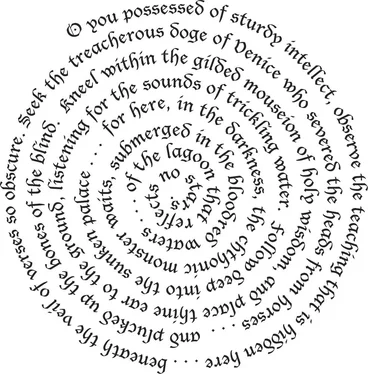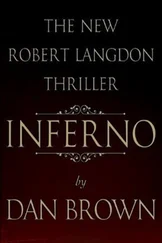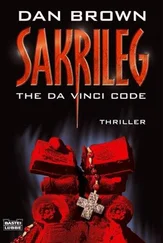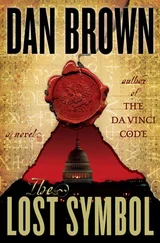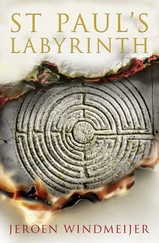Dan Brown - Inferno - A Novel
Здесь есть возможность читать онлайн «Dan Brown - Inferno - A Novel» весь текст электронной книги совершенно бесплатно (целиком полную версию без сокращений). В некоторых случаях можно слушать аудио, скачать через торрент в формате fb2 и присутствует краткое содержание. Год выпуска: 2013, ISBN: 2013, Издательство: Doubleday, Жанр: Старинная литература, на английском языке. Описание произведения, (предисловие) а так же отзывы посетителей доступны на портале библиотеки ЛибКат.
- Название:Inferno: A Novel
- Автор:
- Издательство:Doubleday
- Жанр:
- Год:2013
- ISBN:978-0-385-53786-5
- Рейтинг книги:4 / 5. Голосов: 1
-
Избранное:Добавить в избранное
- Отзывы:
-
Ваша оценка:
- 80
- 1
- 2
- 3
- 4
- 5
Inferno: A Novel: краткое содержание, описание и аннотация
Предлагаем к чтению аннотацию, описание, краткое содержание или предисловие (зависит от того, что написал сам автор книги «Inferno: A Novel»). Если вы не нашли необходимую информацию о книге — напишите в комментариях, мы постараемся отыскать её.
Inferno: A Novel — читать онлайн бесплатно полную книгу (весь текст) целиком
Ниже представлен текст книги, разбитый по страницам. Система сохранения места последней прочитанной страницы, позволяет с удобством читать онлайн бесплатно книгу «Inferno: A Novel», без необходимости каждый раз заново искать на чём Вы остановились. Поставьте закладку, и сможете в любой момент перейти на страницу, на которой закончили чтение.
Интервал:
Закладка:
The jet’s owner, prominent costume designer Giorgio Venci, was not on board, but he had ordered his pilots to take their attractive young passenger wherever she needed to go.
CHAPTER 84
Night had fallen on the ancient Byzantine capital.
All along the banks of the Sea of Marmara, floodlights flickered to life, illuminating a skyline of glistening mosques and slender minarets. This was the hour of the akşam , and loudspeakers across the city reverberated with the haunting intonations of the adhān , the call to prayer.
La-ilaha-illa-Allah .
There is no god but the God .
While the faithful scurried to mosques, the rest of the city carried on without a glance; raucous university students drank beer, businessmen closed deals, merchants hawked spices and rugs, and tourists watched it all in wonder.
This was a world divided, a city of opposing forces—religious, secular; ancient, modern; Eastern, Western. Straddling the geographic boundary between Europe and Asia, this timeless city was quite literally the bridge from the Old World … to a world that was even older.
Istanbul .
While no longer the capital of Turkey, it had served over the centuries as the epicenter of three distinct empires—the Byzantine, the Roman, and the Ottoman. For this reason, Istanbul was arguably one of the most historically diverse locations on earth. From Topkapi Palace to the Blue Mosque to the Castle of the Seven Towers, the city is teeming with folkloric tales of battle, glory, and defeat.
Tonight, high in the night sky above its bustling masses, a C-130 transport plane was descending through a gathering storm front, on final approach to Atatürk Airport. Inside the cockpit, buckled into the jump seat behind the pilots, Robert Langdon peered out through the windshield, relieved that he had been offered a seat with a view.
He was feeling somewhat refreshed after having had something to eat and then dozing at the rear of the plane for nearly an hour of much-needed rest.
Now, off to his right, Langdon could see the lights of Istanbul, a glistening, horn-shaped peninsula jutting into the blackness of the Sea of Marmara. This was the European side, separated from its Asian sister by a sinuous ribbon of darkness.
The Bosporus waterway .
At a glance, the Bosporus appeared as a wide gash that severed Istanbul in two. In fact, Langdon knew the channel was the lifeblood of Istanbul’s commerce. In addition to providing the city with two coastlines rather than one, the Bosporus enabled ship passage from the Mediterranean to the Black Sea, allowing Istanbul to serve as a way station between two worlds.
As the plane descended through a layer of mist, Langdon’s eyes intently scanned the distant city, trying to catch a glimpse of the massive building they had come to search.
The site of Enrico Dandolo’s tomb .
As it turned out, Enrico Dandolo—the treacherous doge of Venice—had not been buried in Venice; rather, his remains had been interred in the heart of the stronghold he had conquered in 1202 … the sprawling city beneath them. Fittingly, Dandolo had been laid to rest in the most spectacular shrine his captured city had to offer—a building that to this day remained the crown jewel of the region.
Hagia Sophia.
Originally built in A.D. 360, Hagia Sophia had served as an Eastern Orthodox cathedral until 1204, when Enrico Dandolo and the Fourth Crusade conquered the city and turned it into a Catholic church. Later, in the fifteenth century, following the conquest of Constantinople by Fatih Sultan Mehmed, it had become a mosque, remaining an Islamic house of worship until 1935, when the building was secularized and became a museum.
A gilded mouseion of holy wisdom , Langdon thought.
Not only was Hagia Sophia adorned with more gold tile than St. Mark’s, its name—Hagia Sophia—literally meant “Holy Wisdom.”
Langdon pictured the colossal building and tried to fathom the fact that somewhere beneath it, a darkened lagoon contained a tethered, undulating sac, hovering underwater, slowly dissolving and preparing to release its contents.
Langdon prayed they were not too late.
“The building’s lower levels are flooded,” Sinskey had announced earlier in the flight, excitedly motioning for Langdon to follow her back to her work area. “You won’t believe what we just discovered. Have you ever heard of a documentary film director named Göksel Gülensoy?”
Langdon shook his head.
“While I was researching Hagia Sophia,” Sinskey explained, “I discovered that a film had been made about it. A documentary made by Gülensoy a few years back.”
“Dozens of films have been made about Hagia Sophia.”
“Yes,” she said, arriving at her work area, “but none like this.” She spun her laptop so he could see it. “Read this.”
Langdon sat down and eyed the article—a composite of various news sources including the Hürriyet Daily News —discussing Gülensoy’s newest film: In the Depths of Hagia Sophia .
As Langdon began to read, he immediately realized why Sinskey was excited. The first two words alone made Langdon glance up at her in surprise. Scuba diving?
“I know,” she said. “Just read.”
Langdon turned his eyes back to the article.
SCUBA DIVING BENEATH HAGIA SOPHIA: Documentary filmmaker Göksel Gülensoy and his exploratory scuba team have located remote flooded basins lying hundreds of feet beneath Istanbul’s heavily touristed religious structure.
In the process, they discovered numerous architectural wonders, including the 800-year-old submerged graves of martyred children, as well as submerged tunnels connecting Hagia Sophia to Topkapi Palace, Tekfur Palace, and the rumored subterranean extensions of the Anemas Dungeons.
“I believe what is beneath Hagia Sophia is much more exciting than what is above the surface,” Gülensoy explained, describing how he had been inspired to make the film after seeing an old photograph of researchers examining the foundations of Hagia Sophia by boat, paddling through a large, partially submerged hall.
“You’ve obviously found the right building!” Sinskey exclaimed. “And it sounds like there are huge pockets of navigable space beneath that building, many of them accessible without scuba gear … which may explain what we’re seeing in Zobrist’s video.”
Agent Brüder stood behind them, studying the laptop screen. “It also sounds like the waterways beneath the building spider outward to all kinds of other areas. If that Solublon bag dissolves before we arrive, there will be no way to stop the contents from spreading.”
“The contents …” Langdon ventured. “Do you have any idea what it is? I mean exactly ? I know we’re dealing with a pathogen, but—”
“We’ve been analyzing the footage,” Brüder said, “which suggests that it’s indeed biological rather than chemical … that is to say, something living . Considering the small amount in the bag, we assume it’s highly contagious and has the ability to replicate. Whether it’s a waterborne contagion like a bacterium, or whether it has the potential to go airborne like a virus once it’s released, we’re not sure, but either is possible.”
Sinskey said, “We’re now gathering data on water-table temperatures in the area, trying to assess what kinds of contagious substances might thrive in those subterranean areas, but Zobrist was exceptionally talented and easily could have engineered something with unique capabilities. And I have to suspect that there was a reason Zobrist chose this location.”
Brüder gave a resigned nod and quickly relayed his assessment of the unusual dispersal mechanism—the submerged Solublon bag—the simple brilliance of which was just starting to dawn on them all. By suspending the bag underground and underwater, Zobrist had created an exceptionally stable incubation environment: one with consistent water temperature, no solar radiation, a kinetic buffer, and total privacy. By choosing a bag of the correct durability, Zobrist could leave the contagion unattended to mature for a specific duration before it self-released on schedule.
Читать дальшеИнтервал:
Закладка:
Похожие книги на «Inferno: A Novel»
Представляем Вашему вниманию похожие книги на «Inferno: A Novel» списком для выбора. Мы отобрали схожую по названию и смыслу литературу в надежде предоставить читателям больше вариантов отыскать новые, интересные, ещё непрочитанные произведения.
Обсуждение, отзывы о книге «Inferno: A Novel» и просто собственные мнения читателей. Оставьте ваши комментарии, напишите, что Вы думаете о произведении, его смысле или главных героях. Укажите что конкретно понравилось, а что нет, и почему Вы так считаете.
